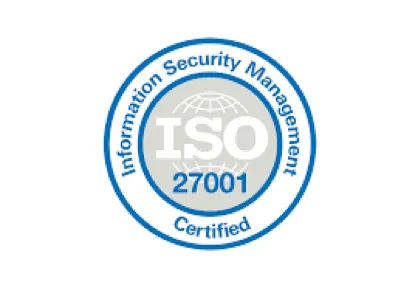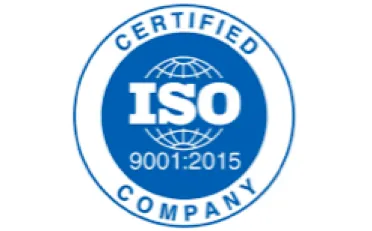Cyber Security Services
We offer end to end Information Cyber security services ranging from Security Strategy, Risk & Compliance and VAPT to Security Operations.

We are at the cusp of hyper-digitization. What began as a wave of digital transformation across the globe 5 years back is making way for more digitization. Cloud is the cornerstone of that hyper-digitized world – A world of opportunities and a revamped workspace. The wave of hyper-digitization backed by the cloud has increased security risks. Skillmine lets your business overcome these risks with our range of services including cloud managed security services and cybersecurity consulting services.
Skillmine takes care of the security needs of businesses, shielding its tools, processes, and people through an uncompromising strategy backed by research.
Cyber Security Consulting
Cyber
Forensics
SOC Solutions & Operations
Governance, Risk & Compliance
Vulnerability Management & VAPT
CISO as a
Service
Managed Security Services
IT Risk
Assessment

Digitization driven by the cloud was what made businesses survive the disruption caused by the COVID-19 crisis. All sectors, big and small, have boarded the bandwagon of change by shifting to the electronic route. What lies ahead is a world, extremely dependent on cyberspace.
Our experience, expertise, advanced tools, and technologies help businesses meet the complexities and security implications. With our integrated and comprehensive approach, which comes with tailor-made solutions, we address all your compliance needs like PCI DSS, HIPAA, GDPR, etc.
We cater to your business needs, enabling businesses to utilize their capabilities in their core business areas. We are specialized in helping businesses manage risks, by real-time monitoring, management, and threat intelligence. Our team aids businesses to implement security transformation plans, making the transition a smooth affair.
Our advanced threat management service lets us detect, analyze, prevent and react to cyber-attacks. This proactive, industry-relevant threat intelligence provides round a clock security monitoring service.
Assess, reduce, mitigate and manage your security risks
- Access Control
- Awareness Training
- Data Security
- Information Protection
- Process & Procedures
- Protective Technology
- Anomalies & Events
- Security Continuous Monitoring
- Detection Processes
- Response Planning
- Communications
- Analysis
- Mitigations
- Improvements
- Recovery Planning
- Improvements
- Communications
Skillmine prioritizes the service availability of your business, without compromising on the security of the data, users, and assets of the business. We work on the twin pillars of service and trust. Key systems like SIEM, ITSM, NPMD, and SOAR platforms with PAM/PIM/Enterprise Vault are employed in our framework to enable a risk-free business system.
- A multi-faceted, multilayered security service against targeted and file-less attacks. Our capabilities include Anti-Phishing, AntiMalware, Antivirus, Antispam, Antispyware.
- Businesses gain a competitive advantage with the right set of tools, strategies, and security operations that we use.
- Securing endpoints with both OnPrem and Cloud-based security management with real-time visibility and reports
- YoY case reduction via proactive correction and root cause analysis.
- Bringing visibility, management, and security for endpoints and end-users across the estate.
- Effective mobile device management solutions that give advanced capabilities to businesses to adapt to the nuances in the ever-changing mobile landscape.
- Rapid escalation and stringent support processes offer fast, efficient, and quality resolution.
- Monitored risk-reward SLAs model for customers, enabling business leaders to track the quality of service (QoS).
- Flexible commercial models – Managed Services, Professional Services, BOT and Outcome-based Pricing.

Globally, cyber threat is evolving at a breakneck rate, with an increasing number of data breaches every year. The technique of protecting computers, servers, mobile devices, electronic systems, networks, and data from hostile intrusions is known as cybersecurity. It’s also known as electronic information security or information technology security. Take a look at some of the categories that fall under cyber security services:

Network security: It is the practice of securing a computer network from intruders, whether targeted attackers or opportunistic malware.
Application security: It is concerned with ensuring that software and devices are free of dangers. A hacked application could allow access to the data it was supposed to secure. Security starts throughout the design phase, long before a program or device is deployed.
Information security: Data integrity and privacy are protected by information security, both in storage and in transit.
Operational security: Includes the processes and decisions for handling and securing data assets. The protocols that dictate how and where data may be kept or exchanged, as well as the permissions users have while accessing a network, all fall under this umbrella.
Disaster recovery and business continuity: Describes how an organization functions in the event of a disaster. Disaster recovery and business continuity are terms used to describe how a company reacts in the case of a cyber-security breach or any other catastrophe that results in the loss of operations or data. Disaster recovery policies define how an organization returns operations and information to the same operational capabilities as before the disaster. Business continuity is the plan that an organization uses when it is unable to operate due to a lack of resources.
Three types of cybersecurity threats are encountered:
- Cybercrime includes individuals or groups who attack systems for monetary gain or to cause disruption.
- Politically motivated information collection is common in cyber-attacks.
- The goal of the cyberattack is to generate panic or dread by undermining electronic systems.
Despite the efforts to plug security breaches by cybersecurity service providers, attackers are continually looking for new ways to avoid detection by IT, bypass protection measures, and exploit new vulnerabilities. The latest cybersecurity risks are making use of work-from-home environments, remote access technologies, and new cloud services to put a new twist on “well-known” attacks. Here are some evolving cyber threats:
Malware: Malware attacks are becoming increasingly “fileless,” and are designed to avoid detection technologies that scan for harmful file attachments, such as antivirus software.
Ransomware: It is a sort of virus that encrypts files, data, or computers and threatens to delete or destroy the data unless a ransom is paid to the hackers.
Phishing: In phishing scams, emails or text messages appear to be from a real organization, requesting sensitive information like credit card numbers or login credentials.
Insider threats: These can arise from current or former workers, business partners, contractors, or anyone who has had access to systems or networks in the past and has abused their access permissions.

Man-in-the-middle attacks: An eavesdropping assault in which a cybercriminal intercepts and relays messages between two parties in order to steal data.
Advanced Persistent threats (APTs): An APT is when an attacker or a group of intruders enter a system and go undiscovered for a long time.
If your business is targeted by an attacker, there are four steps you should do as soon as you become aware of the threat.
- Examine the damage.
- Respond as soon as possible.
- Inform customers, suppliers, and anybody else who is affected.
- Conduct an audit to ascertain the score and vulnerabilities.
To help your business prepare and deal with cyber threats, Skillmine offers cybersecurity consulting services like incident detection, risk assessment, and threat response. We provide comprehensive and integrated cybersecurity solutions, products, and services. Our cybersecurity solutions help businesses embed security into their operations and help them prosper in the face of uncertainty. The multi-layered cybersecurity solutions approach undertaken by Skillmine, as a cybersecurity services companies, enables businesses to secure themselves at all stages.
Globally, cyber threat is evolving at a breakneck rate, with an increasing number of data breaches every year. The technique of protecting computers, servers, mobile devices, electronic systems, networks, and data from hostile intrusions is known as cybersecurity. It’s also known as electronic information security or information technology security. Take a look at some of the categories that fall under cyber security services:
Network security: It is the practice of securing a computer network from intruders, whether targeted attackers or opportunistic malware.
Application security: It is concerned with ensuring that software and devices are free of dangers. A hacked application could allow access to the data it was supposed to secure. Security starts throughout the design phase, long before a program or device is deployed.
Information security: Data integrity and privacy are protected by information security, both in storage and in transit.
Operational security: Includes the processes and decisions for handling and securing data assets. The protocols that dictate how and where data may be kept or exchanged, as well as the permissions users have while accessing a network, all fall under this umbrella.
Disaster recovery and business continuity: Describes how an organization functions in the event of a disaster. Disaster recovery and business continuity are terms used to describe how a company reacts in the case of a cyber-security breach or any other catastrophe that results in the loss of operations or data. Disaster recovery policies define how an organization returns operations and information to the same operational capabilities as before the disaster. Business continuity is the plan that an organization uses when it is unable to operate due to a lack of resources.
Three types of cybersecurity threats are encountered:
- Cybercrime includes individuals or groups who attack systems for monetary gain or to cause disruption.
- Politically motivated information collection is common in cyber-attacks.
- The goal of the cyberattack is to generate panic or dread by undermining electronic systems.
Despite the efforts to plug security breaches by cybersecurity service providers, attackers are continually looking for new ways to avoid detection by IT, bypass protection measures, and exploit new vulnerabilities. The latest cybersecurity risks are making use of work-from-home environments, remote access technologies, and new cloud services to put a new twist on “well-known” attacks. Here are some evolving cyber threats:
Malware: Malware attacks are becoming increasingly “fileless,” and are designed to avoid detection technologies that scan for harmful file attachments, such as antivirus software.
Ransomware: It is a sort of virus that encrypts files, data, or computers and threatens to delete or destroy the data unless a ransom is paid to the hackers.
Phishing: In phishing scams, emails or text messages appear to be from a real organization, requesting sensitive information like credit card numbers or login credentials.
Insider threats: These can arise from current or former workers, business partners, contractors, or anyone who has had access to systems or networks in the past and has abused their access permissions.
Man-in-the-middle attacks: An eavesdropping assault in which a cybercriminal intercepts and relays messages between two parties in order to steal data.
Advanced Persistent threats (APTs): An APT is when an attacker or a group of intruders enter a system and go undiscovered for a long time.
If your business is targeted by an attacker, there are four steps you should do as soon as you become aware of the threat.
- Examine the damage.
- Respond as soon as possible.
- Inform customers, suppliers, and anybody else who is affected.
- Conduct an audit to ascertain the score and vulnerabilities.
To help your business prepare and deal with cyber threats, Skillmine offers cybersecurity consulting services like incident detection, risk assessment, and threat response. We provide comprehensive and integrated cybersecurity solutions, products, and services. Our cybersecurity solutions help businesses embed security into their operations and help them prosper in the face of uncertainty. The multi-layered cybersecurity solutions approach undertaken by Skillmine, as a cybersecurity services companies, enables businesses to secure themselves at all stages.
Frequently Asked Questions
Cybersecurity is the practice of protecting networks, devices, and data from unauthorized access. Organizations with a comprehensive cybersecurity strategy governed by best practices and automated through advanced analytics, Artificial Intelligence (AI), and Machine Learning can fight cyber threats more effectively and reduce the lifecycle and impact of breaches.
Cybersecurity is important because it safeguards all types of data against theft and damage. This includes sensitive data, personal information, intellectual property, data, and government and industry information systems. An organization cannot defend itself against data breach campaigns without a cybersecurity program.
The major goal of information security is to protect the company’s data confidentiality, availability, and integrity. Additionally, it also aims to provide internal guidance on security policies, procedures, and best practices.
The three biggest challenges to address cybersecurity problems are the shortage of efficient and skilled cybersecurity professionals, the threat landscape that is evolving at a rapid pace, and the need for a comprehensive cybersecurity strategy that involves technology, policies, and training to mitigate risks and ensure compliance with regulations and industry standards.
The two main criteria for cybersecurity are confidentiality and integrity. Confidentiality refers to ensuring that sensitive information is protected from unauthorized access or disclosure, while integrity refers to ensuring that data is accurate, consistent, and trustworthy, and has not been tampered with or modified without authorization.
Cyber threats refer to any potential or actual attack on computer systems, networks, or digital devices that can compromise the confidentiality of data and systems. The top 5 major cyber threats are:
- Insider threats.
- Malware attacks.
- Ransomware attacks.
- Phishing and social engineering attacks.
- Advanced persistent threats (APTs) and targeted attacks. Other threats include DDoS attacks, botnets, and vulnerabilities in software and hardware.










Need guidelines to secure your system from cyber attacks?
Download our Cyber Security checklist to know more.

